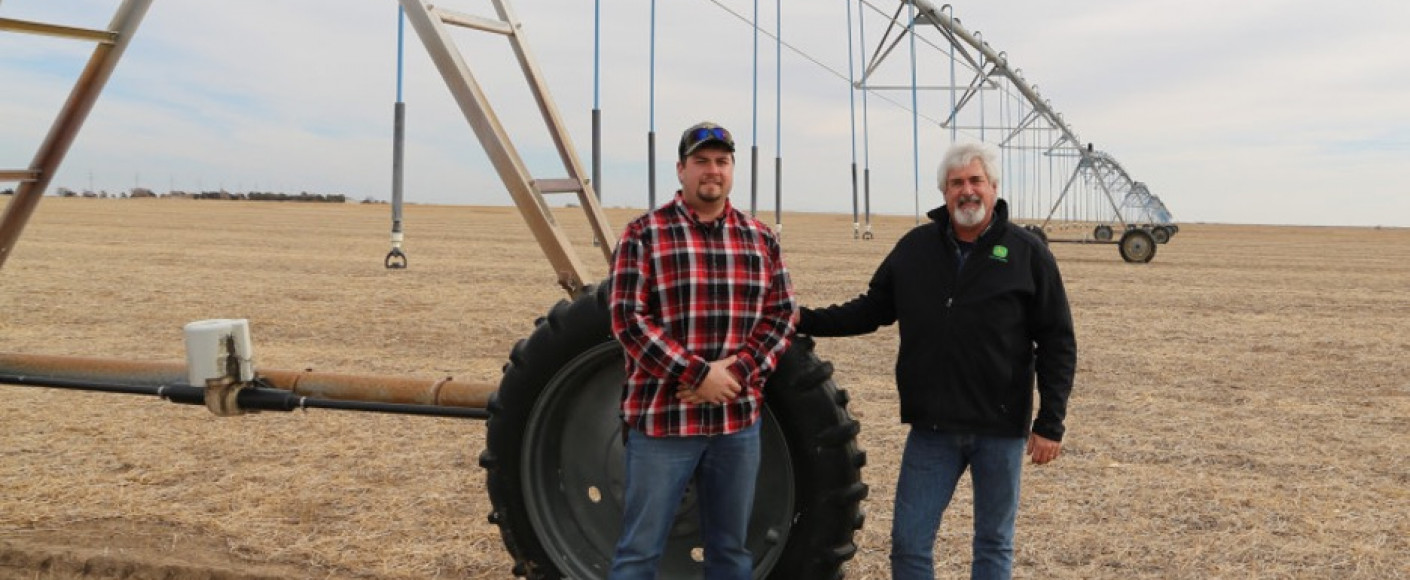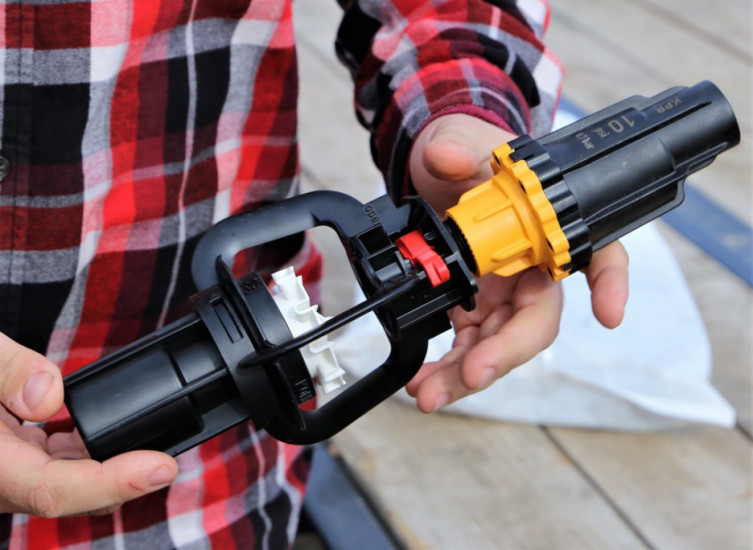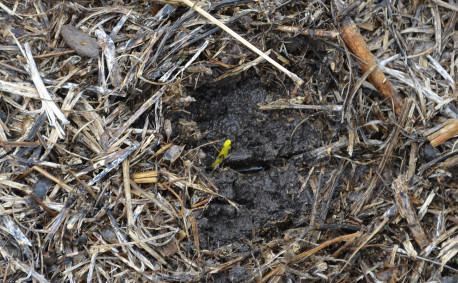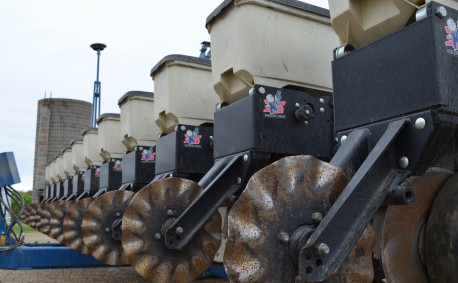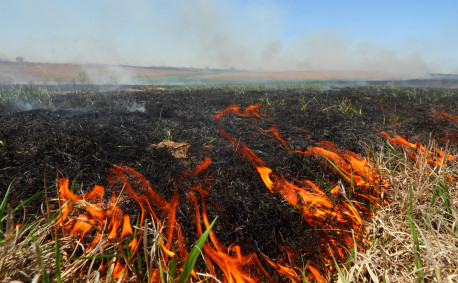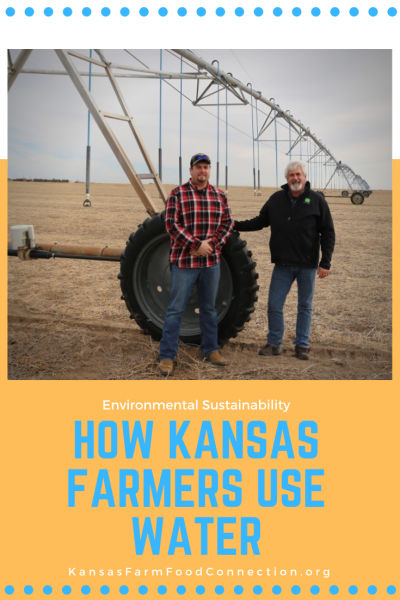Irrigation: How Kansas Farmers Conserve Water
Running a farm is tough work with many decisions to be made and jobs to juggle. One important piece of the puzzle is watering crops properly. Too much water will drown the seeds. Too little will stunt growth. To deliver just the right amount, farmers often turn to irrigation systems. These systems produce a controlled amount of water on a set schedule. Kyle and Michael Deaver know all about using irrigation systems to help their farm thrive and save resources.
Kyle and his father, Michael, grow corn, soybeans, sorghum and wheat in Finney County, in Southwest Kansas. Because rain alone isn’t enough to support their crops, they pump water from the Ogallala Aquifer to boost production.
“We would be cut clear back to a third of what we’re doing if we didn’t have irrigation,” Michael said. “If this all relied on rainfall alone … we’d have the same acres, but we would only get 30, 35, 40 percent of the grain coming off of it.”
Weeks before planting season even started, Kyle planned to update their equipment with new nozzles that would deliver “big, fat uniform droplets” to crops. These upgrades will do more than conserve water; they’ll also save time and money.
The Deavers plan to update four of their 20 irrigation systems with the new nozzles as part of a concerted effort to continually update their sprinklers to grow more while using fewer resources.
Irrigation Evolution
Michael grew up in eastern Kansas and made his way west in the early 1980s. He recalled farmers used open ditches and underground pipes to water their crops, which didn’t do the trick. A single well would pump up to 2,200 gallons per minute (GPM) to soak up to 80 acres of corn.
To put those numbers in perspective, with their current technology, the Deavers can use a single well to water up to nearly 300 acres of crops! Their current sprinklers use about 800 GPM, but once the new nozzles are in place that will fall to 500 GPM, allowing them to use less water and cover more acres.
Eye on the Future
The Ogallala Aquifer that quenches the Deavers’ crops supports agricultural production across the High Plains, from South Dakota to Texas. Decades of irrigation from the underground reservoir have already caused some farmers to abandon their irrigation wells due to depletion.
Michael said his family has been fortunate to be in a good area, but he still notices his wells’ output decline as the growing season goes on.
“It holds in there really well until the middle of August when everybody’s pumped on the aquifer real hard,” he said. “We notice it decline a little toward the end of the season.”
Any water not pumped to crops today will still be available tomorrow. That’s one component of the calculation the Deavers are making as they continue to invest in technology to grow more with less water.
“When we’re irrigating, we want it to be as efficient as possible,” Kyle said. “Just so my daughter can farm, and her kids. That’s the goal – just to sustain what we have out here. Every little bit helps.”
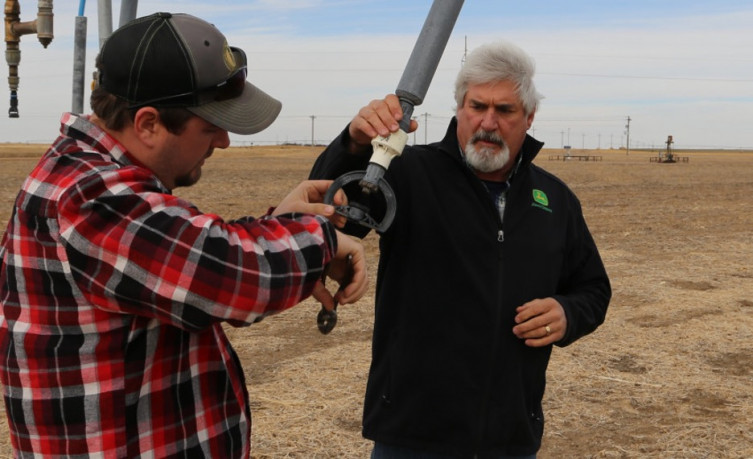 To build a completely new system can cost $190,000 or more. That’s why the Deavers are making incremental, cost-effective investments — like upgrading the nozzles — to improve their existing systems.
To build a completely new system can cost $190,000 or more. That’s why the Deavers are making incremental, cost-effective investments — like upgrading the nozzles — to improve their existing systems.
Michael said they have about seven acres in each corner where the water can’t reach. They usually plant crops like wheat and sorghum in these corners because these crops can better tolerate the dry conditions. Recently they’ve experimented with dryland soybeans, as well.
Location Matters
One more way their new nozzles help conserve water is their position. The lower the nozzles are to the ground, the less water loss there is due to evaporation.
Michael said the evaporation rate can top 50 percent on hot, dry and windy summer days common in Southwest Kansas. Lowering the number of drops will reduce the moisture lost to the air.
“Ultimately the whole idea is to save water and get more of it to the crop and less of it spilling out into the atmosphere, which doesn’t do anybody any good,” he said. “We’re going down to get our evaporation loss in the 10 to 15 percent range.”
 Reducing the evaporation rate not only conserves water, it also reduces wear and tear on the sprinkler system. Getting the water amounts right from the start means less time running the equipment, which translates to yet another cost savings.
Reducing the evaporation rate not only conserves water, it also reduces wear and tear on the sprinkler system. Getting the water amounts right from the start means less time running the equipment, which translates to yet another cost savings.
Keeping Track
To monitor the moisture levels in their fields, the Deavers use soil probes to get a better understanding of what happens once the water penetrates the soil.
“When we say probe, actually it’s more in depth than that,” Michael said. “You not only know what moisture you’ve got, you also know, within reason, what your crop is using, has been using and is going to use.”
The probe allows the Deavers to see the water as it moves through the soil. Five years ago, they tested their first probes in two fields. The year after that, they put probes in all their fields because the savings were so substantial.
The new technology doesn’t just save water and money, it also frees up the Deavers’ time. The sprinklers and probes are equipped with communication devices that can beam information directly to a smartphone.
“I have one probe that’s 16 miles away,” Michael said. “It’s a 32-mile round trip. I can shut that off without having to go over there. Instead of going over every day, I go over every two or three to put oil in the engine. It cuts down the miles on the pickup and my time.”
Before the service was available, a sprinkler could get stuck right after it was checked in the late evening and pour water on the same spot until the next morning — a huge waste.
“We used to go check them two to three times a day,” Kyle said. “Now we just look at our phones, and they’ll tell us if they’re all good.”
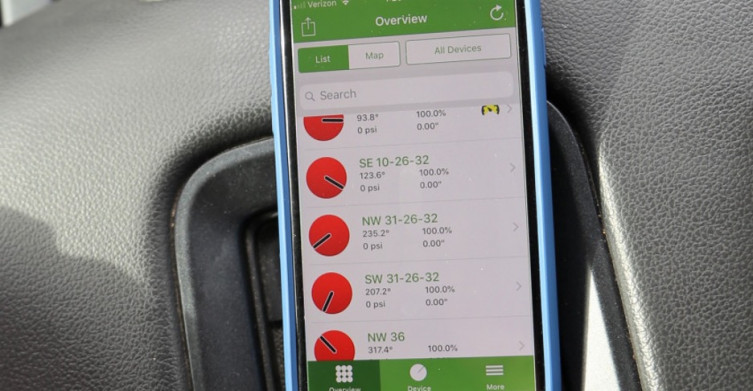 The Deavers are committed to being good stewards of the aquifer to save time and money as well as conserve water. They’re working to sustainably use the resource so it will be available for future generations.
The Deavers are committed to being good stewards of the aquifer to save time and money as well as conserve water. They’re working to sustainably use the resource so it will be available for future generations.
This article originally appeared in Kansas Living and has been edited for our website. Read the full, original article by Greg Doering here.

